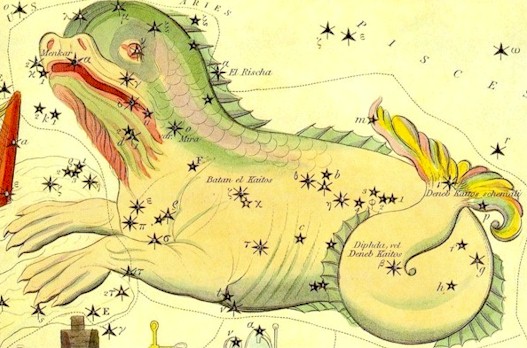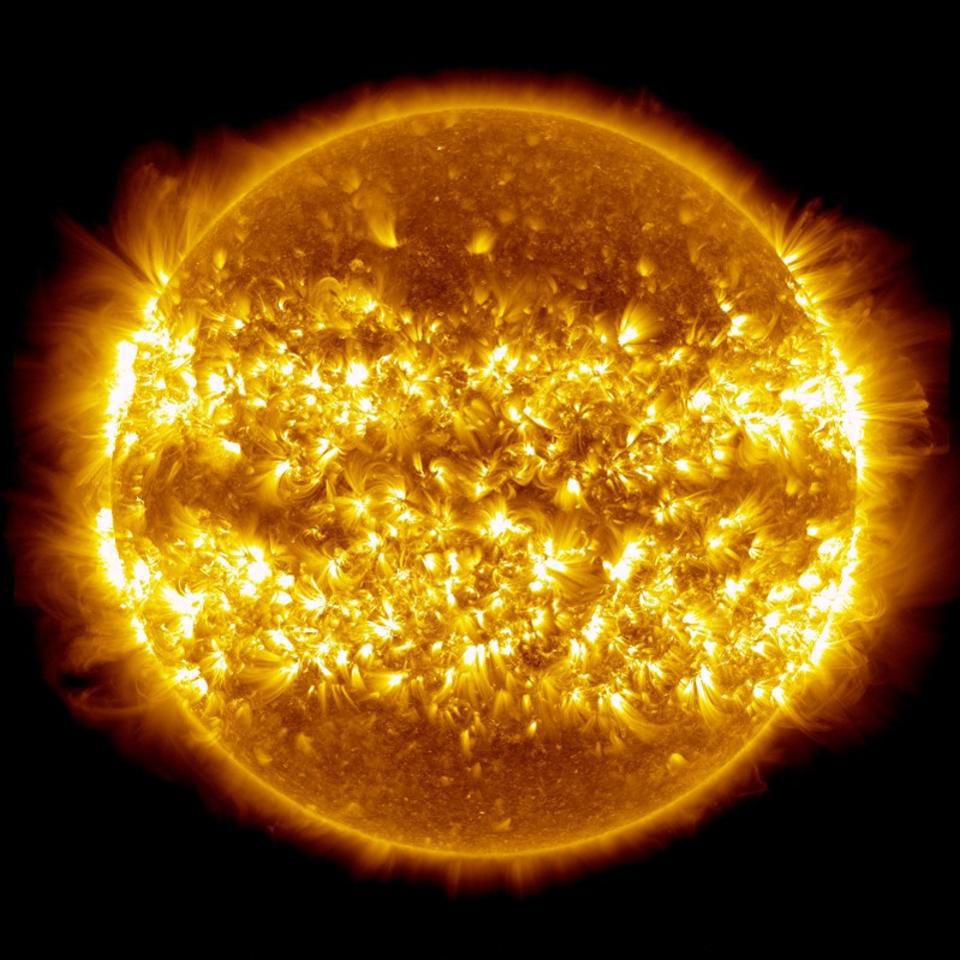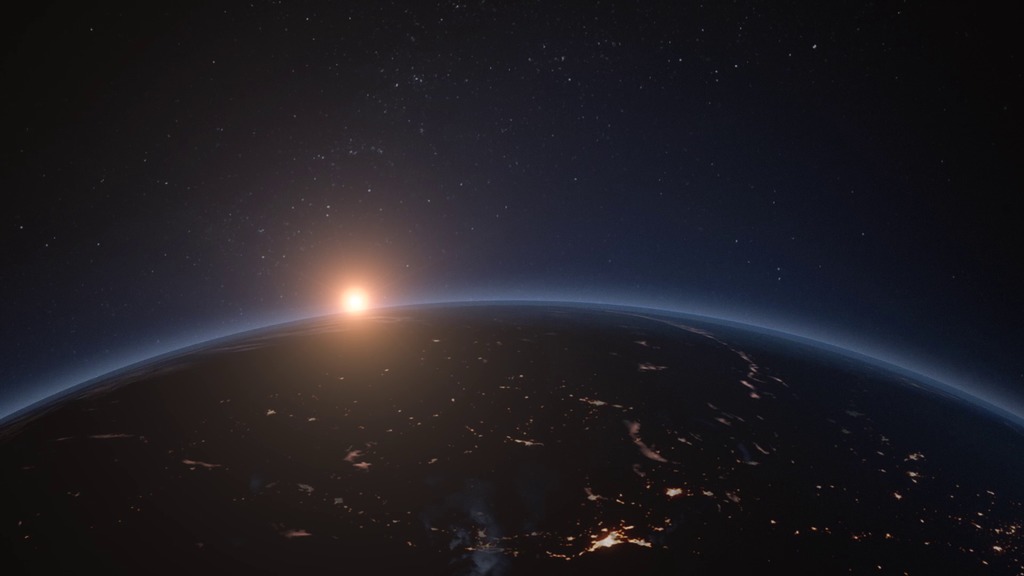Cetus: The First Leviathan
Remember the maxim, "In the Greek mythological realm, the people conquered the land; revered the mountains and feared the sea." After all, the land always yielded to storming armies of well equipped, thoroughly trained and sufficiently fed soldiers. The towering, cloud-puncturing summits seemed suitable abodes for the lofty deities. Yet, the opacity of the wine-dark sea proved most foreboding: Ships merely traversed the sea's surface and even the most intrepid divers could plunge little more than a hundred feet below it. The lower depths, having been both invisible and impassable, were unknown and, as such, engendered morbid fear. The most fearsome creatures lurked in the briny deep. Cetus, sometimes called the "whale" or "sea monster." was arguably its most dreaded denizen.
Cetus first appeared around during the reigns of Cepheus and Cassiopeia, the king and queen, respectively, of ancient Ethiopia. Cassiopeia, an admittedly beautiful woman, was also known to have been shamelessly boastful both about her own prepossessing appearance and that of her only daughter Andromeda. She made the grave error of declaring that Andromeda's beauty surpassed that of the Nereids, ocean nymphs beloved of Poseidon, the god of the ocean. Poseidon was so incensed at this impudent boast that he unleashed Cetus from its undersea lair to destroy Cassiopeia's home village. The sight of the ferocious monster rising from the waves induced Cassiopeia and her husband Cepheus to consult their local sage for advice. He told them of Poseidon's displeasure and instructed them to chain Andromeda to the rocks as an offering to Cetus. They miserably agreed and agreed to sacrifice their daughter. Fortunately, Perseus, the warrior who had just recently slain the mortal gorgon Medusa, was flying nearby on Hermes winged sandals. He spied Andromeda and promptly approached her parents with an offer to save their daughter in exchange for her hand in marriage. They readily agreed, of course, as they preferred to suffer the indignity of having a brash son-in-law over the anguish of watching their only child being devoured. In some versions, Perseus merely flew up to Cetus and showed her Medusa's severed head, a gruesome trophy he had been carrying in his satchel. The sight of Medusa's face petrified Cetus at once and Andromeda was saved. In another, messier version,Perseus flies around Cetus like a gnat and methodically dices him into fragments with his sword. In both versions, Perseus prevails.
Curiously, Cetus arose again, during the time of Heracles, Perseus's great-grandson, and half brother.* Trojan king Laomedon incurred the wrath of both Apollo and Poseidon after he refused to pay the wage he promised the two gods in exchange for their construction of the impregnable walls surrounding Troy. While Apollo smited Troy with a plague, Poseidon deployed Cetus to ravage Troy. Laomedon consulted an oracle which commanded him to offer his daughter Hesione to Cetus, just as Cassiopeia and Cepheus had offered their daughter Andromeda years before. That Cetus arose again isn't truly perplexing. We remember that Poseidon fashioned Pegasus out of Medusa's blood mixed with sea foam. Reconstituting Cetus would have been well within his powers. (The notion that another poet simply re-used Cetus as the villian in another tale is far too outlandish for us.) On this occasion, Heracles and his cohorts Telemon and Oicles had just returned from their battle against the Amazons when Hesione was chained naked to the rocks. Heracles approached Laomedon and promised to save his daughter provided that the king give him the splendid horses that Zeus had given him to compensate him for the abduction of Ganymede. (Years earlier, Zeus had abducted Ganymede, Laomedon's eldest son, to be his cupbearer.) Laomedon also quickly agreed to Heracles' terms. Having not been in possession of a severed gorgon head, Heracles had to fight the monster head on, which he did with his characteristic vigor. Having seen that Cetus was not only enormous, but completely protected by rock-hard scales, Heracles promptly jumped into its mouth and dove down its throat. He then spent three entire days hacking relentlessly at his innards with his broad sword. He deftly avoided being swept along the alimentary canal and ultimately managed to slay Cetus literally from the inside out. Heracles emerged from the cadaver and demanded payment, which the crook Laomedon refused to tender. The Trojan king had qualms about paying his debts.
Cetus made no other appearance. Presumably, his second death was his last and Poseidon was content to allow its body to dissolve into the same wine-dark sea from which it had twice arisen. Although other creatures loitered about the oceans, none of them ever seemed as formidable as Cetus, the twice-slain sea monster
*Zeus fathered both Perseus and Heracles. Heracles' mother Alceme, was the daughter of Electyron, one of the daughters of Perseus and Andromeda.
THE SOUTHWORTH PLANETARIUM
70 Falmouth Street Portland, Maine 04103
43.6667° N 70.2667° W
Altitude: 10 feet below sea level
Founded January 1970
Julian Date: 2459280.18
2020-2021: XCIX
THE DAILY ASTRONOMER
Tuesday, March 9, 2021
Exploratorium XXIX: Night and Day
"What is the most extraordinary astronomical phenomena of them all, in your opinion?"
Many people have posed that question to me and my response has proven profoundly disappointing. One would think I would cite time-warping black holes, or, perhaps, the Big Bang inception event. Actually, I think the most extraordinary is the periodic transitions from day to night and then back again. If you find that assertion somewhat disappointing, as well, please bear with me, at least for a bit.
The Stellar Furnace
Daylight occurs when our part of this highly massive planet, which is rotating in a void, turns toward the Sun, our parent star. Like all active stars, the Sun generates prodigious amounts of energy in its core, where unrelenting thermonuclear fusion processes convert lighter elements into heavier elements. During that process, some of the initial material is transmuted into energy. Such reactions have been occurring in the Sun for billions of years. The empyreal sphere that casts blinding light onto our backyard and bedrooms once shone brilliantly over Triassic skies, above newly crafted pyramids and will someday loom high over the topless towers of 35th century city scapes.
The Arduous Trek
Blink!
Thank you.
During that moment when you blinked, approximately 646 million tons of hydrogen was converted into helium within the Sun's core. A minute amount of that hydrogen became energy, generally in the form of gamma radiation. So, when will we feel that energy?> Well, WE won't feel it at all. The energy will slowly migrate out of the core and into the photosphere where it will finally be released into space. During the intervening period, the photons created just a moment ago will undergo innumerable absorptions and re-emissions. Each emission will send the photon in any number of directions. (Analogously, think of how long a trip from New York City to Los Angeles would require if one had to stop at every third house and then were pushed out in any direction and had to walk in that other direction until reaching the third house and beginning the process anew.) The sunlight generated when you blinked earlier will be emitted into outer space in about 300,000 years!
Is the Sun visible to you right now? Look at any surface it illuminates. You are seeing photons that the Sun generated around the time our species first appeared.
Earth's Allotment
Remember that the Sun is nearly 100 million miles from Earth. The Sun radiates energy in every single direction. Imagine the sun's light as a rapidly expanding sphere moving outward. Our planet receives about a billionth of that energy, Although the other planets and other solar system bodies absorb small amounts, as well, most of it escapes into outer space and becomes incorporated into the collective light of the Milky Way Galaxy. Not only are we bathed in ancient starlight on every sunny day, We are also receiving a negligibly small portion of the sun's energy. To give one an idea of the size of one billionth of something, realize that one billion seconds approximately equals 32 years!
Turning Earth
The planet has been rotating since its formation nearly 4.5 billion years ago. Of course, so, too, has the solar system, When the primordial material collapsed to form the Sun and its retinue of attendant bodies, everything started to spin. Earth is moving around the Sun's gravity well and it also turns on its axis. Although Earth has been turning constantly since its birth, its rotation rate hasn't remained constant. Earth spun much faster a few billion years ago, just as it will rotate much more slowly a few billion years from now. The moon is responsible for this changeable rotation rate. Or, more precisely, the moon's recession is responsible. As the moon slowly moves away from Earth, the planet's day length decreases, on the order of milliseconds per century.
Day occurs when an entire world spinning in space turns toward a star that casts a minute amount of ancient light on us: light that started in the roiling nuclear core. At night, we turn toward the eternal darkness of outer space and see the array of distant suns adoring our sky. We've scheduled our lives around these periodic transitions and so they might seem mundane. They're nothing of the sort...then again, nothing in the Universe is ordinary.
To subscribe or unsubscribe from the Daily Astronomer:



